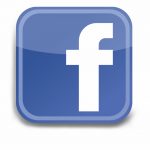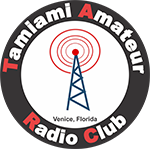Getting Started With DMR
Getting started with DMR is easy! Just follow the four steps below and you’ll be up and running in no time!
1. Check for DMR Coverage
Verify that you are within the coverage area of a DMR repeater using the DMR repeater map.
2. Get a Subscriber ID
All radios on ham radio DMR networks require a unique Subscriber ID, so you will need to have one assigned before you can program your radio to operate on a DMR repeater. If you intend to have more than one DMR radio active at any given time, then you should request a Subscriber ID for each radio.
Within about 24 hours, you should receive your Subscriber ID via email. Please do not transmit with your DMR radio until you have received a Subscriber ID and have this programmed into your radio. Using ad-hoc Subscriber ID numbers will cause conflicts with other users on the network.
3. Obtain a DMR Radio
Obtain a DMR radio, the programming software and cable (if required for your desired radio model) from one of the sources listed on the FAQ page.
4. Program your DMR radio
Program your DMR radio using the DMR repeater specifications found on the DMR repeater map by clicking on DMR repeaters in your local area, plus the Subscriber ID you received via e-mail.
DMR 101
Digital Mobile Radio is, as the name implies, digital. Originally developed in Europe, DMR is used worldwide. You have probably heard of MOTOTRBO, Motorola’s implementation of DMR. Like D-STAR, we can do stuff with DMR just not possible in the analog world.
The big difference between D-STAR and DMR are the markets they were designed for. D-STAR is from the Amateur world, and focuses on the user controlling what connections are possible over the D-STAR network. D-STAR encourages user experimentation and customization as well.
DMR is from the commercial world where the user just wants to “Push-To-Talk”. The focus is on ease of use as the radio is simply a means of communication. How and where the network connects is left to the system manager.
BrandMeister is changing DMR into a more “Ham-Centric” mode. Much like D-STAR, the BrandMeister network lets the used decide how a repeater is connected to the network.
DMR Concepts
Just as FM and D-STAR require more than just entering a frequency, DMR has its own unique set of parameters to program. Don’t panic, they do make sense, especially if you remember DMR is designed for the commercial market, and we have adapted it for Amateur use.
To put things simply, there are several “Big Ideas” with DMR: Radio ID, Color Code, Timeslot, Talkgroup and Zones:
- Radio ID (Subscriber ID): DMR is digital, and networked, so each radio has a unique ID number to identify it on the network. In the D-STAR world this corresponds to the “MYCALL” parameter. To obtain a radio ID, go to: https://register.ham-digital.org/
- Color Code: This is the DMR version of PL.
- Timeslot: DMR uses magic known as “Time Division Multiple Access” (TDMA). In Simple Ham English, this means the repeater can support two simultaneous conversations by alternating between two timeslots. About 30ms is given to timeslot 1, then the transmitter flips to timeslot 2 for 30ms, then back to timeslot 1, and then to timeslot 2; you get the idea. Something like the mom who speaks to her several kids, allotting each of them 30ms to talk. Since you transmit on just one timeslot, your radio’s battery last longer as it is really only transmitting about half the time you have the PTT keyed. In other words, the repeater’s Time is Divided such that Multiple hams can have Access (TDMA).
- Talkgroups: DMR is designed for the commercial market where radio users typically have something in common, such as Security, Engineering, Parade Operations, etc. It isn’t very efficient to have separate repeater pairs for each group, so DMR uses “Talkgroups” to group together users who want to talk to each other. On our DMR repeaters we have several Talkgroups that allow you to talk to geographically increasing areas: local, regional, statewide, all the way up to worldwide. Talkgroups are also either “Always On” (Static for BrandMeister) or “User Activated” (Dynamic for BrandMeister). “Always On” means just that, network traffic to this talkgroup is always on. UA (User Activated or “PTT” for us Old Skool DMR Guys) talkgroups have a timer associated with them, typically 10 minutes. The practical side of this is that after 10 minutes of local inactivity on a User Activated talkgroup, it is dropped from the network connection. To start listening to a User Activated talkgroup, key up, and you probably want to talk at least once every 10 minutes as well in order to keep the network feed.
- Zones: Think of a “Zone” as a way to organize a group of channels. A typical DMR repeater has about 16 talkgroups to choose from, so multiply 16 by the number of DMR repeaters you want to use and this makes for a lot of channels! How can we keep things organized? We use Zones to give us a convenient way to organize these talkgroups. Again, remember that DMR is a commercial thing. We group our channels into Zones for ease of use, such as putting all the Parade Ops talkgroups into one Zone. It is easier to select a channel within a Zone than it is to scroll through hundreds of channels to find the right combination of repeater and talkgroup. You can set up your Zones pretty much however you like, be it a Zone for each repeater or a “Road Zone” containing the talkgroups on the different repeaters you use on your roadtrip. Zones can contain DMR and analog repeaters as well. Set them up so they work for you.

